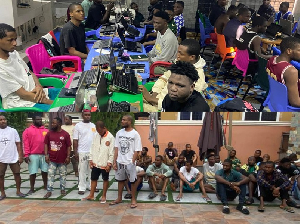Business News of Tuesday, 20 October 2015
Source: GNA
Youth employment crisis easing but far from over - ILO
Despite a mild recovery in the 2012-2014 periods, the youth unemployment rate remains well above its pre-crisis level, the International Labour Organisation’s (ILO) Global Employment Trends (GET) for Youth 2015 has said.
It said for millions of young people around the world finding a decent job is still a drawn-out uphill struggle.
According to the report which was made available to the Ghana News Agency on Monday by the ILO, the global youth unemployment rate has stabilized at 13 per cent following a period of rapid increase between 2007 and 2010 but it is still well above the pre-crisis level of 11.7 per cent.
It highlights a drop in the number of unemployed youth to 73.3 million in 2014; that is 3.3 million less than the crisis peak of 76.6 million in 2009.
It said compared to 2012, the youth unemployment rate had decreased by 1.4 percentage points in Developed Economies and the European Union and by half a percentage point or less in Central and South-Eastern Europe (non-EU) and Commonwealth of Independent States, Latin America and the Caribbean and Sub-Saharan Africa.
It said the remaining regions – East Asia, South-East Asia and the Pacific, the Middle East and North Africa – saw an increase in the youth unemployment rate between 2012 and 2014, and no change in the case of South Asia.
Because of a shrinking youth labour force, the youth unemployment rate remains stubbornly high despite a decline in the number of unemployed youth; in fact, the rate is expected to creep up to 13.1 per cent in 2015, according to the report’s projections.
“It is encouraging to see an improvement in the youth employment trends compared to the GET for Youth 2013,” said Sara Elder, the report’s lead author.
“But we shouldn’t lose sight of the fact that recovery is not universal and that almost 43 per cent of the global youth labour force is still either unemployed or working yet living in poverty. It is still not easy to be young and starting out in today’s labour market,” she added.
According to the report, global shares of youth in the total labour force, whether employed or unemployed, are decreasing over time; explaining that one reason is that more young people (although still not enough) are participating in education.
It said however, millions of young people in low-income countries continue to leave school to take up jobs when they are too young.
According to the report, 31 per cent of youth in low-income countries have no educational qualifications at all, compared to six per cent in lower middle-income countries and two per cent in upper middle-income countries.
It also highlights a persistent gender gap with the rates of young women’s participation in the labour market being significantly lower than those of young men in most regions; stating that they continue to be also more exposed to unemployment than their male counterpart.
It said more young people in developed economies were now finding work but the quality of jobs is below their expectations; adding that still too many remain stuck in long-term unemployment.
It said developing economies continue to be plagued by structural underemployment, informal employment and working poverty.
It noted that while working poverty (living on less than two dollars per day) has decreased over the past 20 years, it still affects 169 million (one in three) young workers in the developing world.
The report said the number increases to 286 million if the near poor are included (living on less than four dollars a day).
The report offers new evidence on how young people move into the labour market based on data from recent school-to-work transition surveys.
It said for young people who aspire to a stable job, the transition period takes an average of 19 months.
It said a young person with university education is able to move to a stable job in one-third of the time needed for a youth with primary education; stating that in most cases the transition takes longer for young women than men.
It said rapid changes in technology, in patterns of work and employment relationship, as well as new forms of start-ups, requires constant adjustment to new labour market conditions and addressing skills mismatches.
The report said providing youth the best opportunity to transition to a decent job calls for investing in education and training of the highest possible quality.
It mentioned that providing youth with skills that match labour market demands, giving them access to social protection and basic services regardless of their contract type, as well as leveling the playing field so that all aspiring youth can attain productive employment regardless of their gender, income level or socio-economic background.
“We know that today’s youth do not face an easy labour market transition and with the continued global economic slowdown, this is likely to continue, but we also know that greater investment in targeted action to boost youth employment pays off. It is time to scale up action in support of youth employment,” said Azita Berar Awad, Director of the ILO’s Employment Policy Department.
The report said a combination of efforts that place priority on job creation and target the specific disadvantages of young people are required to reap the benefits of public and private investments and of other measures to restore economic growth.












